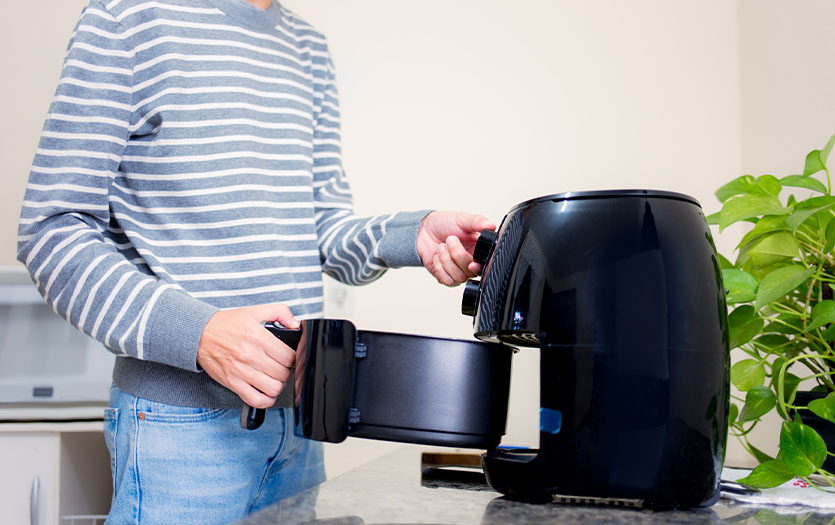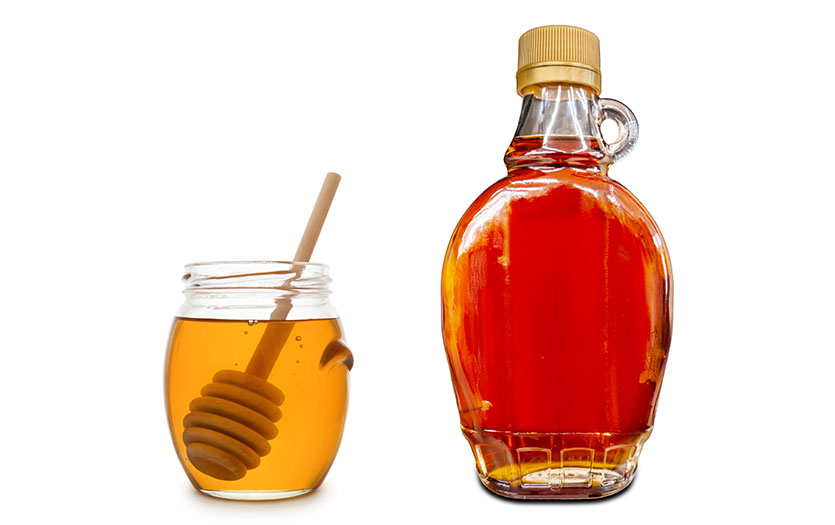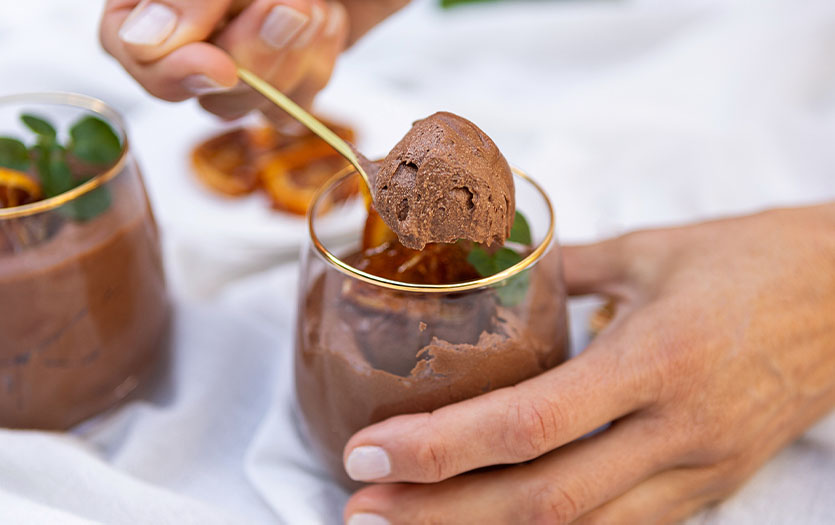
This post was written by Caitlyn Bauer, MS, RDN, LD, clinical dietitian, Parkview Health.
By now, you probably own an air fryer, or you’ve at least wondered what all the hype is about. The popularity of this kitchen appliance has skyrocketed in recent years. In fact, according to CNBC, U.S. consumers spent almost $1 billion buying air fryers in 2022. With so many people using this appliance on a regular basis, we thought we’d break down the benefits as well as some common mistakes people make (and how to avoid them) so you can get the most out of this appliance.
What is an air fryer?
Although the first electric oven was invented in 1945, it wasn’t until 2010 that the air fryer was developed in Germany, with the intent of creating a fryer that offered a healthier alternative to deep frying.
The small, countertop kitchen appliance we know today cooks with a combination of radiation heat and convection heat. A broiler above produces radiation heat, and a fan is used to rapidly rotate the heat, resulting in foods that are brown and crispy on the outside but moist and tender on the inside.
What are the benefits?
Despite the name, the air fryer isn’t a fryer at all. Because it uses convection heat and requires less fat than deep frying, the air fryer is a healthier way to cook foods that have a crispy texture. This makes it a great option if you’re trying to lose weight or simply want to cut back on the amount of fats you’re consuming. Compared to deep frying, it’s also safer, cooks food in less time and makes less of a mess.
People who own air fryers love that they require minimal effort. Just put in your food, set the timer and enjoy! They’re easy to use, easy to clean and many are dishwasher safe.
What can you cook in an air fryer?
Air fryers are extremely versatile and can cook a variety of foods. Yes, you can use them to cook foods that are commonly deep-fried, but that’s only the tip of the iceberg. They can also be used for foods that you might typically bake, grill or cook on the stovetop, including:
- Proteins such as chicken, beef, fish, pork, etc.
- Vegetables
- Battered and breaded foods
- Desserts such as cakes and cheesecakes
- Leftovers that need reheated
- And so much more!
What are some common mistakes people make with the air fryer?
Although it is simple to use, here are some tips to make sure you’re using your air fryer to its full potential and getting the best results possible. Some common mistakes include:
- Using it like a conventional oven. When using an air fryer, you can’t use the same temperature or cook time as you would with your oven. Choose recipes that have specific instructions for air fryers or follow this general rule of thumb: lower the cooking temperature by 25 degrees Fahrenheit and reduce the cook time by 20%.
- Not checking the temperature. Every model cooks differently, with some running higher or lower than the temperature it’s set at. Use an oven thermometer to read the temperature inside (and check it every six months) so you know whether you need to adjust the temperature for your specific air fryer.
- Assuming your food is cooked. Even if you’re following a recipe, you should never assume that your air fryer will cook food to the correct temperature. Always check the temperature of meats, poultry and fish to make sure it is cooked properly.
- Not using enough oil. Most air fryers will need 1-2 teaspoons of oil when cooking; breads will need 1–2 tablespoons to reach the ideal crispiness. Adding the correct amount of oil keep the texture of your food from becoming dry and leathery.
- Using too much oil. On the other hand, using too much oil can be detrimental. Don’t overdo it, or your food will become soggy or burned. Not to mention that it’s a fire hazard.
- Using aerosol cooking sprays. Additives in the aerosol pump of PAM® and other similar products can damage the non-stick coating of the air fryer. Use a spray or other form of oil instead.
- Overcrowding your food. When food is too crowded in the air fryer, the air is not able to circulate properly, leading to food that is not cooked evenly. If necessary, cook in batches when you have a lot of food to prepare.
- Not preheating. Even air fryers need reheated to get the inside warmed up and ready for cooking. Preheating your air fryer will help you achieve a crisp texture and avoid soggy food.



